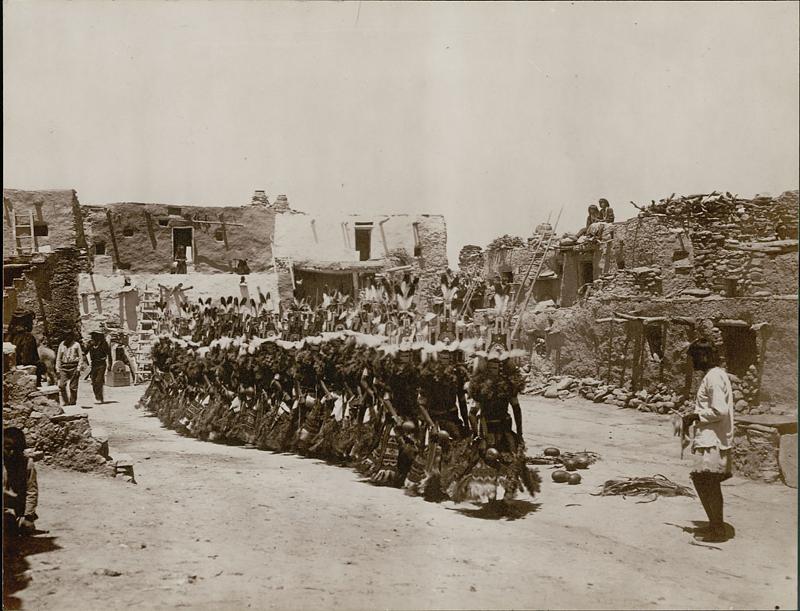Social and Political Organization
Until recently, the town was the largest sociopolitical unit (today, there is a Hopi Council makes certain decisions for all Hopi). Each town was endogamous, meaning that individuals were expected to marry others from their same town. Although each town had a chief, this was largely a ritual position and the chief had little secular decision-making authority. Instead, power among the Hopi was spread among a variety of chiefs, clan heads, and society heads.
The matrilineal clan was the primary decision-making unit. It was the clans that controlled the agricultural lands, and the clan leaders who made decisions about how these lands were to allocated. The clan leaders were also responsible for particular ceremonies and for maintaining the ceremonial paraphernalia associated with the ceremonies. The clans were ranked in terms of prestige, with the greatest prestige belonging to those clans that had lived in the village the longest. The clans, in turn, were grouped into larger entities known as phratries.
In addition to the clans and phratries, there were several men's societies that were responsible for certain social functions, including society initiations and hosting certain ceremonies and social dances. A society's membership would include individuals from several different clans; thus, they provided an important mechanism for integrating the town and helped prevent the concentration of power into any one clan or group. Among the Hopi, perhaps the most important society was (and still is) the kachina society, which is responsible for conducting the kachina dances to ensure rains come and to bring well being into the world. Kachinas are supernatural beings that bring prosperity and harmony to the world; the term is also used to refer to the masked figures that impersonate the kachinas in the dances as well as the carved wooden dolls that represent these beings.

Kachina dance, 1901
Source - SPC Sw Hopi No # Ceremonies 01595300, National Anthropological Archives, Smithsonian Institution
Thus, among the Hopi, power was distributed among a variety of chiefs, society heads, and clan heads. There was a hereditary aspect to this power, in that some clans held more power and prestige than other clans. However, this did not translate into greater wealth or into a concentration of secular power. This social organization gave the Hopi great flexibility and provided long-term stability to the system. However, in historic times, it has created difficulties for the Bureau of Indian Affairs (BIA) and U.S. governmental officials used to dealing with more centralized governments. Secular governors and tribal councils installed by U.S. officials have met with mixed reception among the Hopi, who are not used delegating authority to one individual or council.
Click on next page to continue.
